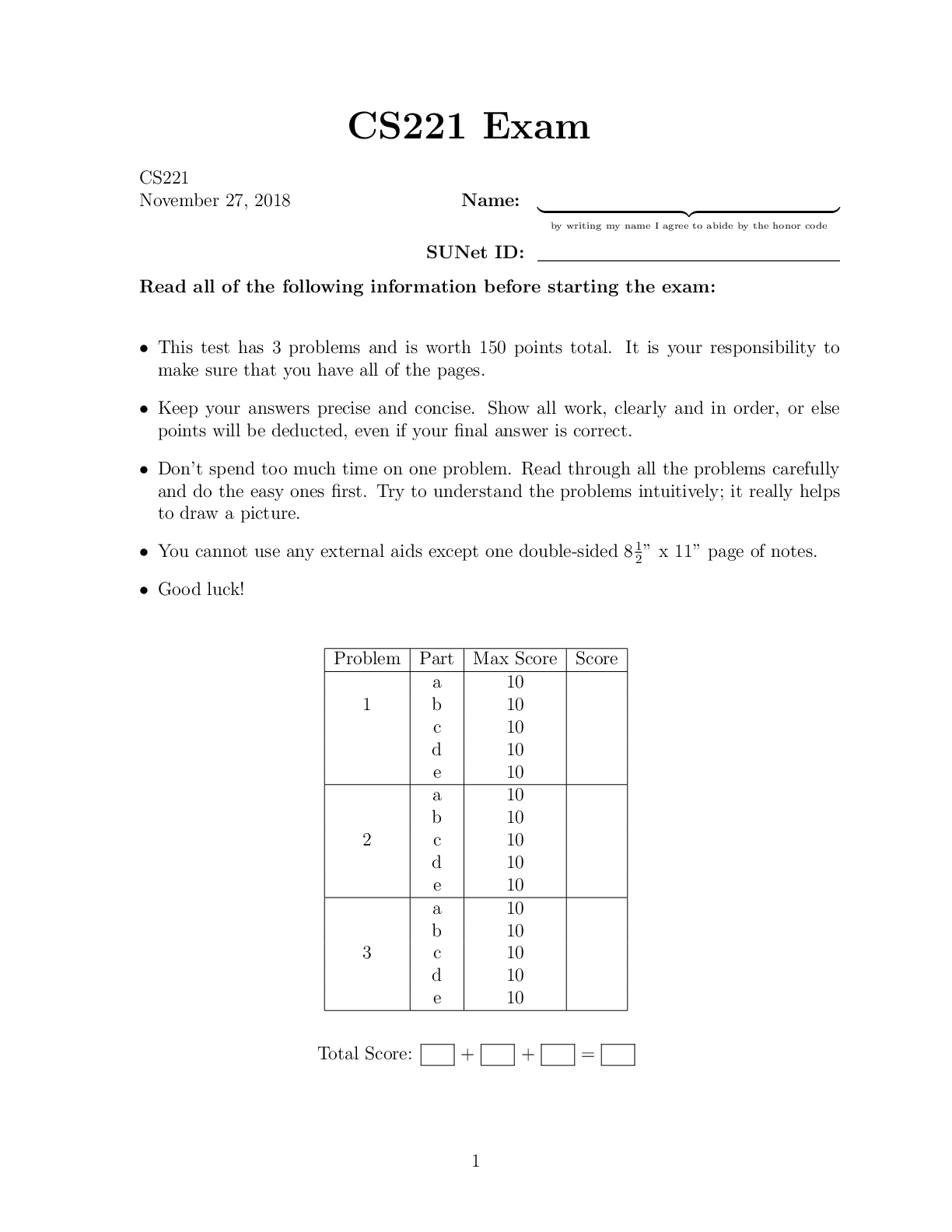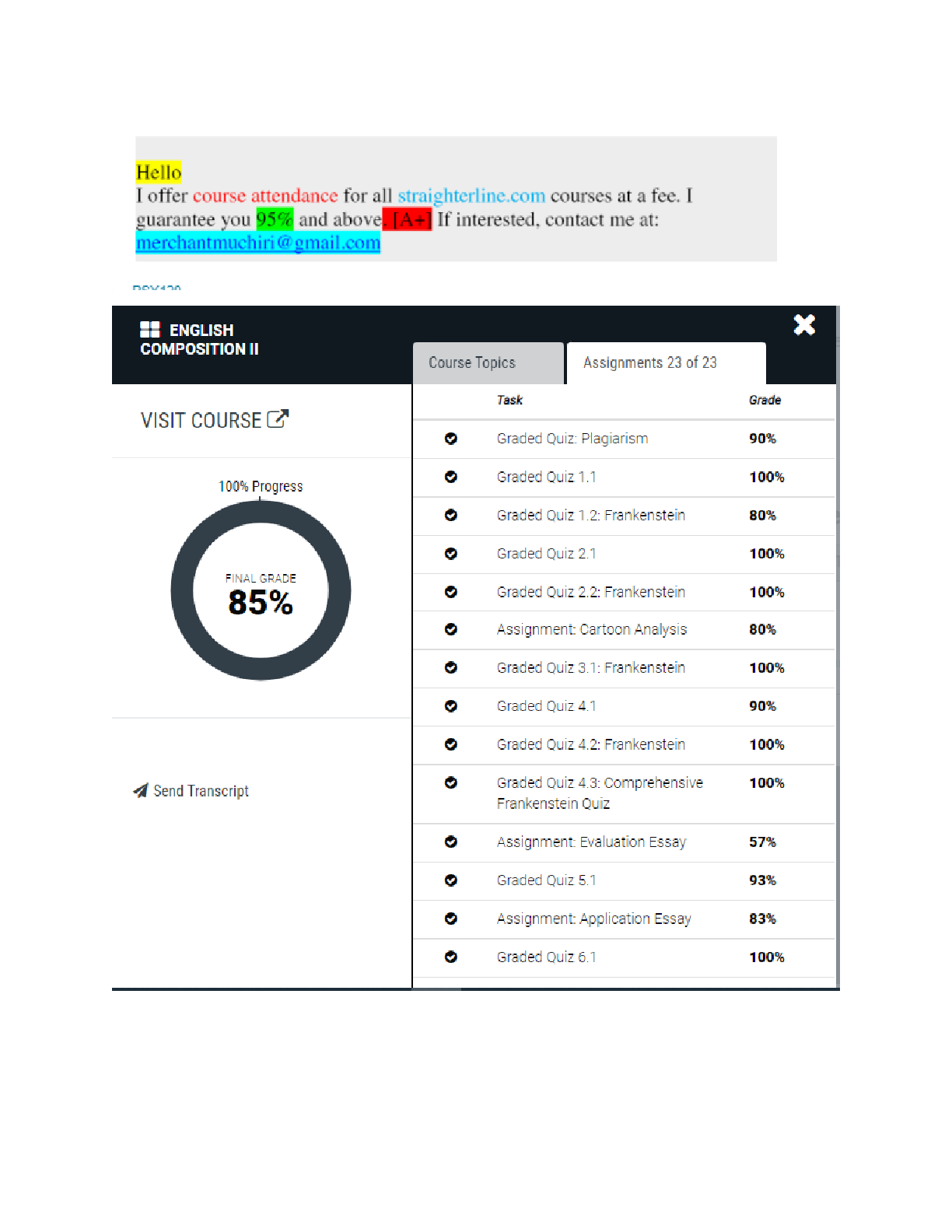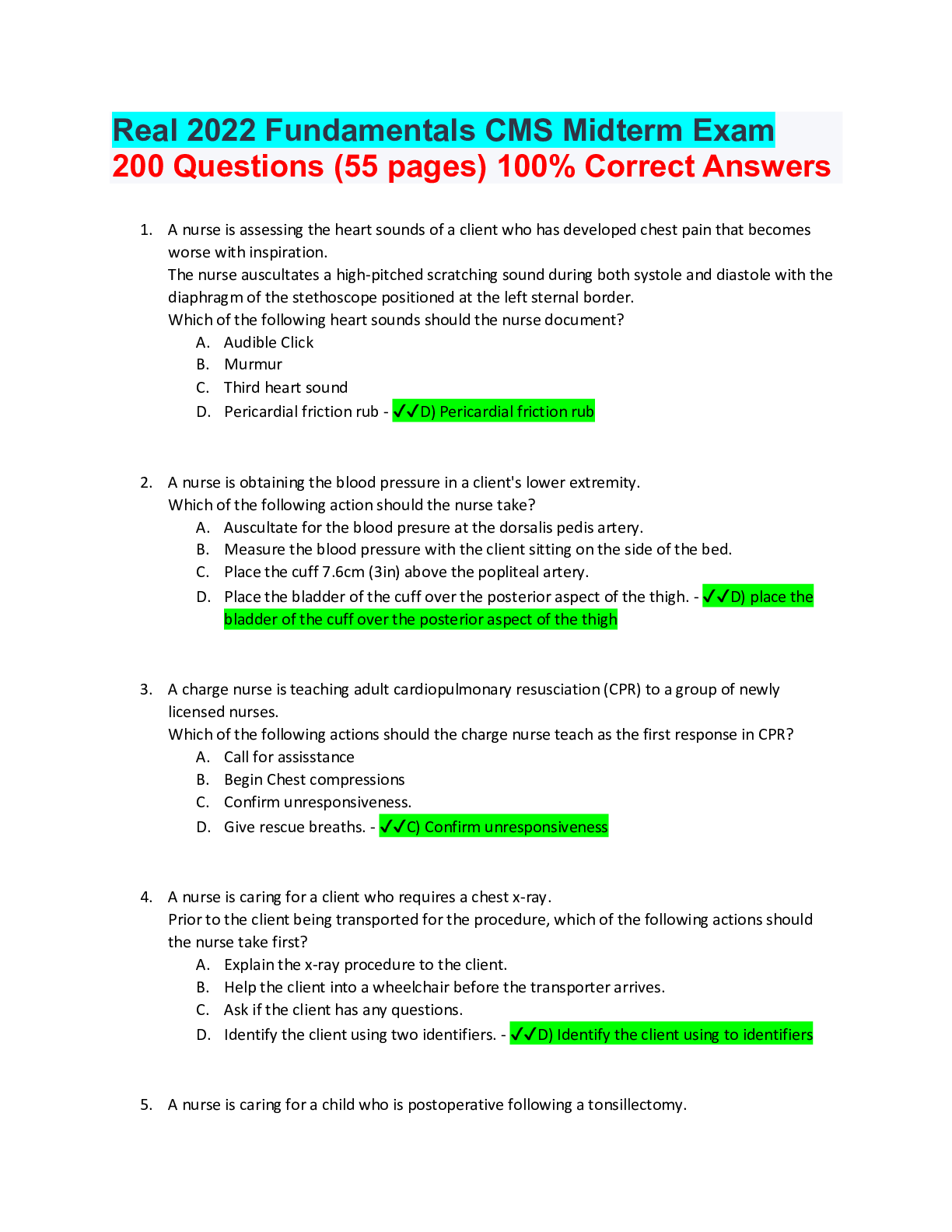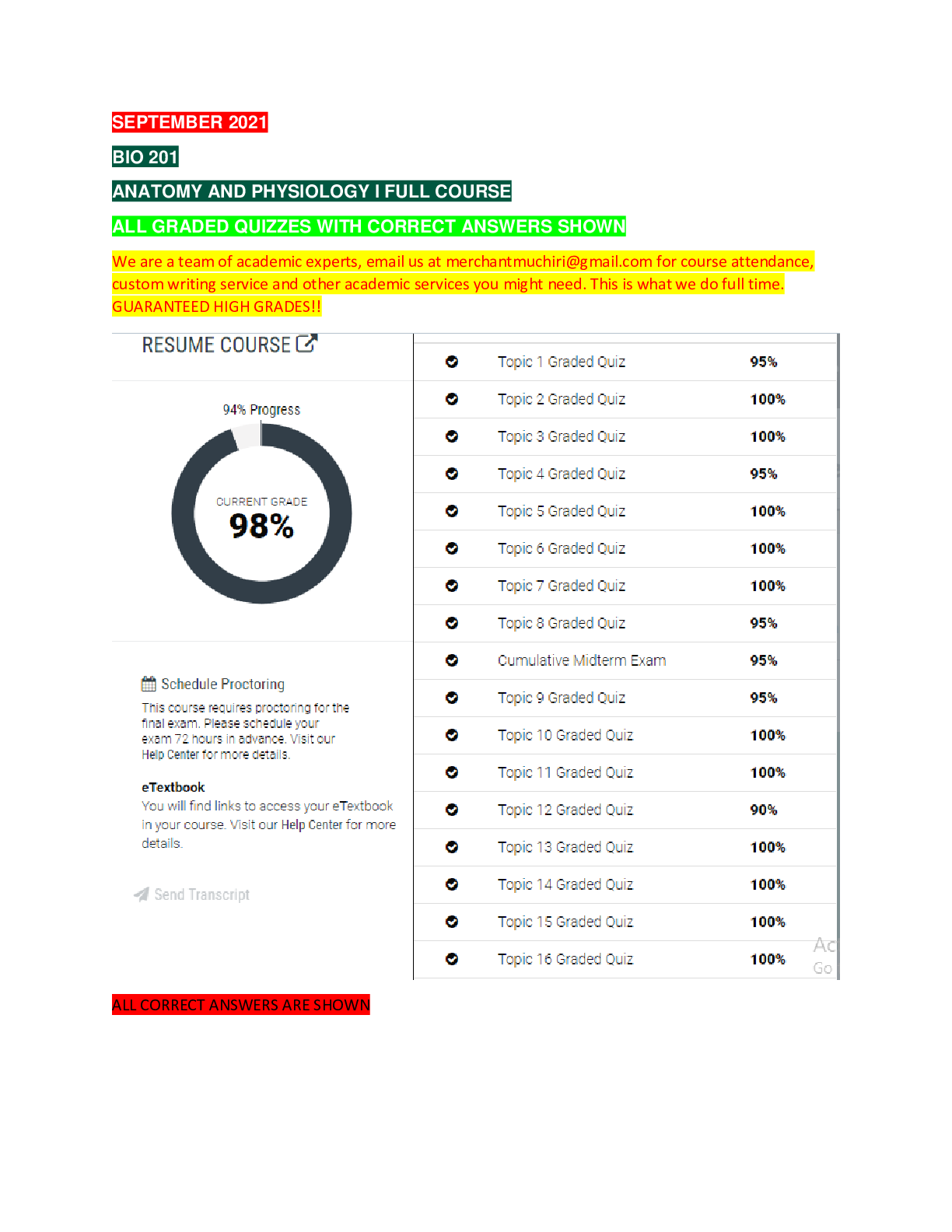Computer Science > EXAM > Stanford University - CS 221aut2018-exam (All)
Stanford University - CS 221aut2018-exam
Document Content and Description Below
CS221 Exam CS221 November 27, 2018 Name: | {z } by writing my name I agree to abide by the honor code SUNet ID: Read all of the following information before starting the exam: • This test ha... s 3 problems and is worth 150 points total. It is your responsibility to make sure that you have all of the pages. • Keep your answers precise and concise. Show all work, clearly and in order, or else points will be deducted, even if your final answer is correct. • Don’t spend too much time on one problem. Read through all the problems carefully and do the easy ones first. Try to understand the problems intuitively; it really helps to draw a picture. • You cannot use any external aids except one double-sided 81 2" x 11" page of notes. • Good luck! Problem Part Max Score Score 1 a 10 b 10 c 10 d 10 e 10 2 a 10 b 10 c 10 d 10 e 10 3 a 10 b 10 c 10 d 10 e 10 Total Score: + + = 11. Wildlife (50 points) You are working in a wildlife conservation group, where you are installing n sensors to detect the presence of a wild animal called a pangolin. Let Y 2 f0; 1g denote whether there is actually a pangolin (in a given location), and let X1; : : : ; Xn denote the predicted outputs of the n sensors, where each Xi 2 f0; 1g. We assume the following: • There is a natural rate of pangolin appearance p(y = 1) = h. • All sensors have the same false positive rate of p(xi = 1 j y = 0) = α. • All sensors have the same false negative rate of p(xi = 0 j y = 1) = β. • All sensor outputs are conditionally independent given the actual appearance (see Figure 1). Y X1 X2 X3 X4 Figure 1: A Bayesian network with n = 4 sensors relating the presence of a pangolin Y and sensor outputs X1; : : : ; X4. 2a. (10 points) The specification sheet for the sensors does not provide the false positive rates or the false negative rates, so you have to estimate them. Each week, you install a new sensor, record all the outputs of all the sensors installed thus far. Then you go out into the field and observe whether there is a pangolin or not (Y ). Below is the data you have collected, where \-" indicates there is no data for that sensor for that week. X1 X2 X3 X4 Y Week 1 0 - - - 0 Week 2 0 1 - - 0 Week 3 1 1 0 - 1 Week 4 0 0 1 0 0 Compute the maximum likelihood estimate of the parameters (h; α; β) of the Bayesian network: h = α = β = 3b. (10 points) After experiencing the dangers of data collection in the wild for four weeks, you decide that it’s not really your true calling. Instead, you’re just going to use your estimated parameters (h; α; β) to predict Y for future weeks. Suppose that you have n sensors installed. During one week, you observe that all the sensors output 1. What is P(Y = 1 j X1 = · · · = Xn = 1), i.e. the probability that there is a pangolin given the observations? Your answer should be an expression defined in terms of (h; α; β; n). [Show More]
Last updated: 2 years ago
Preview 1 out of 24 pages

Buy this document to get the full access instantly
Instant Download Access after purchase
Buy NowInstant download
We Accept:

Also available in bundle (1)

Stanford University CS 221 exams (2014, 2015, 2016, 2017, 2018) , aut2018-exam, midterm2015, Midterm Spring 2019
Stanford University CS 221 exams (2014, 2015, 2016, 2017, 2018) , aut2018-exam, midterm2015, Midterm Spring 2019
By Muchiri 3 years ago
$25
8
Reviews( 0 )
$7.00
Can't find what you want? Try our AI powered Search
Document information
Connected school, study & course
About the document
Uploaded On
Apr 15, 2021
Number of pages
24
Written in
Additional information
This document has been written for:
Uploaded
Apr 15, 2021
Downloads
0
Views
72










.png)
.png)

